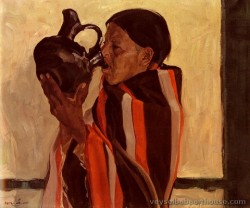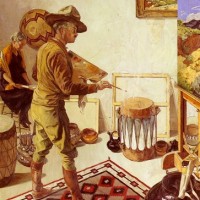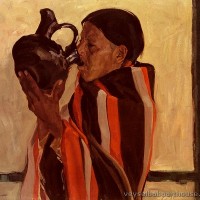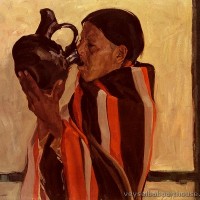- Home
- ABOUT US
- ABOUT VEYSEL BABA
- REDFOX ART HOUSE VIRTUAL TOUR
- MY LAST WILL TESTAMENT
- NOTES ON HUMANITY AND LIFE
- HUMAN BEING IS LIKE A PUZZLE WITH CONTRADICTIONS
- I HAVE A WISH ON BEHALF OF THE HUMANITY
- WE ARE VERY EXHAUSTED AS THE DOOMSDAY IS CLOSER
- NO ROAD IS LONG WITH GOOD COMPANY
- THE ROAD TO A FRIENDS HOUSE IS NEVER LONG
- MY DREAMS 1
- MY DREAMS 2
- GOLDEN WORDS ABOUT POLITICS
- GOLDEN WORDS ABOUT LOVE
- GOLDEN WORDS ABOUT LIFE
- GOLDEN WORDS ABOUT DEATH
- VEYSEL BABA ART WORKS
- SHOREDITCH PARK STORIES
- EXAMPLE LIVES
- ART GALLERY
- BOOK GALLERY
- MUSIC GALLERY
- MOVIE GALLERY
- Featured Article
- Home
- ART GALLERY
- Walter Ufer

Walter Ufer
Walter Ufer (July 22, 1876 – August 2, 1936) was an American artist based in Taos, New Mexico. His most notable work focuses on scenes of Native American life, particularly of the Pueblo Indians.
Ufer was born in Germany and moved with his family to Louisville, Kentucky in 1880 where Ufer grew up.[1] After an apprenticeship as a lithographer, he went to Europe where he was a traveling journeyman. Like many of his fellow artists with ties to Indianapolis's German-American community, he went to Germany to study; he trained in Hamburg and Dresden.[2] When he returned to America, he worked as a printer in Chicago and taught school, and later took classes in fine arts. After a brief time in Chicago, he returned to Munich in 1911 for further study as an artist. Upon his return to the US, he traveled to Taos in 1914. There he became one of the "Taos Ten", and associated with the Taos Society of Artists.
In addition to his art, Ufer is known for his social activism. He helped victims of the 1918 flu epidemic being treated in the local schoolhouse and collected money for miners on strike in Madrid, New Mexico.[3] He was also a member of the International Workers of the World and follower of Leon Trotsky.[4]
Ufer died from appendicitis. At his request, he was cremated and his ashes were spread in an arroyo (creek) near Mabel Dodge Luhan's house in Taos.[5]
Artwork
In the 1920s, Ufer's work garnered critical and commercial success. He showed at the Carnegie International, and became an Academician of the National Academy of Design. Ufer's New Mexico paintings are characterized by genre scenes of Native American life and landscapes executed in a high-keyed palette. One of his favorite models was a Taos Indian named Jim Mirabal who was often referred to as "Ufer's Jim."
Museums with his work include the Art Institute of Chicago, the Museum of Fine Arts, Houston, New Mexico Museum of Art,[6] and the Indianapolis Museum of Art.



